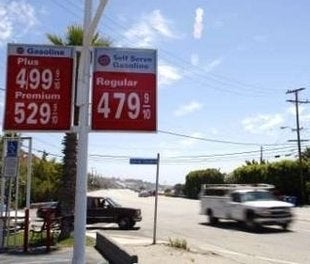
The decision by the Fed yesterday to leave rates unchanged--despite inflationary pressures from soaring oil prices on the one hand and a weakening economy on the other, testifies to the conundrum an oil shock creates. There are, in essence, two possible choices when a shock sends prices soaring. One is to raise rates to squeeze the inflation out of the economy. The other is to allow the inflation. Neither is a pleasant option. However, they have quite different consequences.
To see the potential impact of either policy, one only needs to look at the first two oil shocks in the 1970s, for each exemplifies one approach.
The First Oil Shock in 1973, was a watershed in economic history. The immediate trigger was the Yom Kippur war pitting Israel against Egypt and Syria. However, the pre-conditions for the spike were already present in the decision of Nixon to take the US dollar off the gold standard in 1971 which allowed the dollar to depreciate reducing the revenues of oil producers combined with the failure of the Seven Sisters oil companies to cut a deal with the still-docile oil producing nations on revenues. In October, when war broke out, what we now call OPEC announced it had become a cartel and blocked oil shipments to countries supporting Israel, ie the US, Europe and Japan, causing prices to spike.
Accustomed to getting endless oil for practically nothing--it was western companies like BP and Mobil after all that had dug the oil wells in the desert--the West went into a panic. In the US, daylight savings time was suspended, gas rationing went into place and auto races were cancelled. The US economy went into recession. In due course, the CAFE standads came into being in 1975 and Americans began buying small Japanese cars.
However, faced with this challenge, central bankers decided not to raise interest rates and, in fact, to cut them once the economy tanked, allowing the economy to inflate. The result was what we now call staglation, a stagnant economy combined with inflation that cut stock prices in half. Stagflation characaterized the 70s in the US and in Europe set the stage for the drive for a European Union to combat eurosclerosis.
Fast forward to 1979, the year of the Second Oil Shock. This time, the trigger was the Iranian revolution and subsequent invasion of Iran by Iraq that cut production in both countries by about 6.5 million per day. This time, however, the West reacted in a far different manner. As inflation soared, Central Bankers decided to face it straight on and take the bitter medicine of monetarism. Fed Chairman Paul Volker began raising rates until they rose into the double digits.
The result was another recession. However, the Fed kept the heat on, leaving rates high through 1981 and putting the economy through the proverbial wringer. By 1984, inflation had been wrung out of the economy and the US finished its conversion frrm an industrial to a post-industrial economy This transition involved the shuttering of the steel industry, the shipping industry, the old electronics industry and much of America's industrial base. However, in its wake emerged the post-industrial US economy of finance and technology that characterized the expansions of the 1980s and 1990s.
Two shocks; two courses of action; two outcomes: stagflation, or wrenching restructuring of the economy.
Of the two, the latter was the more painful but ultimately the better choice. However, it marked the end of one era of American economic and social history and the beginning of a new one.
Are we at a similar juncture in history? Quite possibly. If the world really faces up to the new demand for energy, we may be looking at the end of the high carbon economy and the beginning of a new, low carbon one. But the change will be momentous.
On the other hand, the alternative, putting off the reckoning and allowing staglation to emerge may be easier in the short run but may only delay the inevitable.
In addition to interest rate policy, whether the world gets serious about lowering carbon emissions and makes the needed investments in renewable energies are also important questions that will determine the shape and pain of the needed adjustment.
Right now it's too early to predict how the world will react to the third oil shock, but without real backbone and leadership, 1970s style staglation appears to be the outcome toward which the West is slouching